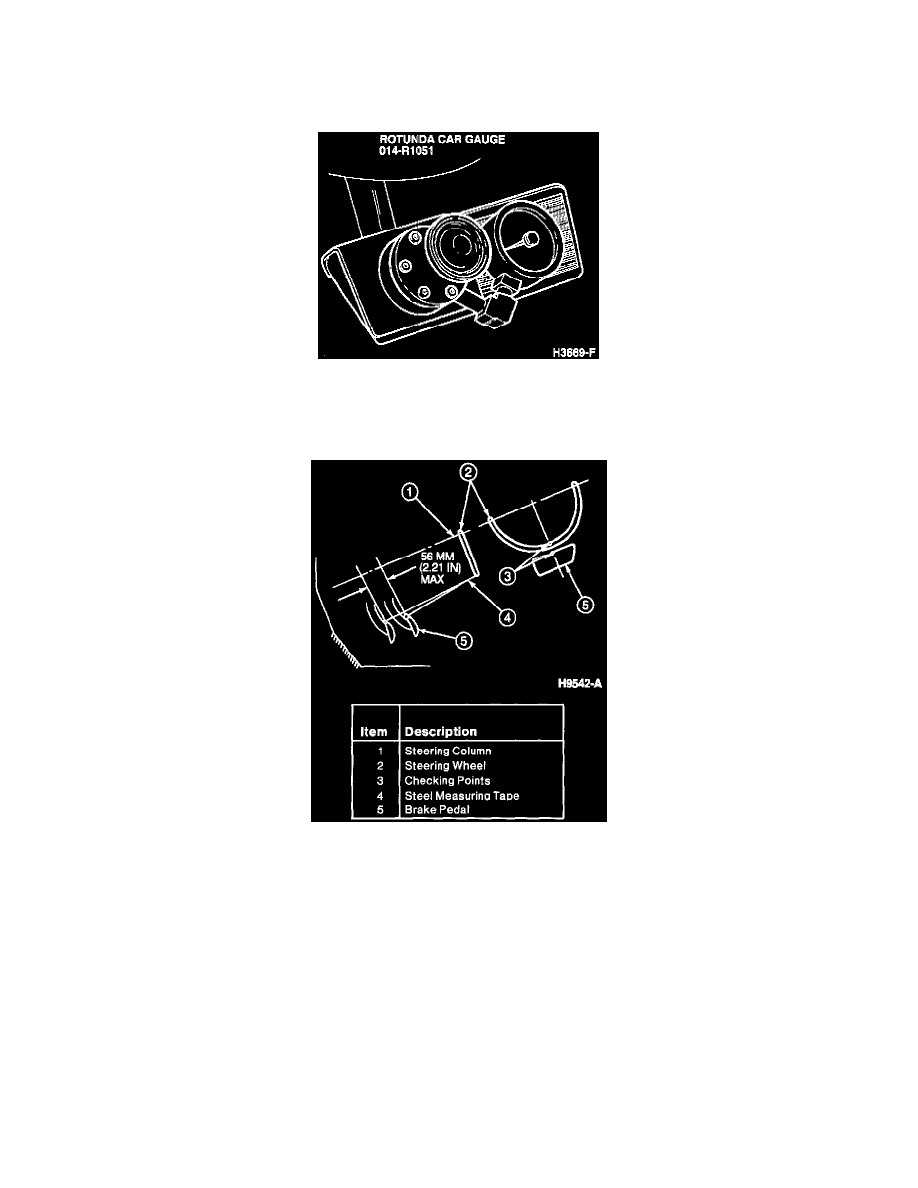Windstar V6-232 3.8L (1995)

Brake Pedal Assy: Adjustments
Brake Pedal Travel
1. With engine running and transaxle range selector lever in PARK or NEUTRAL, block wheels and release parking brake control.
2. Install Rotunda Effort Gauge 021-00001 or equivalent on the brake pedal and check as follows:
3. Hook a steel measuring tape to the brake pedal. Measure and record the distance from the brake pedal free height position to the reference point,
which is at the six o'clock position on the steering wheel rim.
4. With the steel tape still hooked to the brake pedal, apply the brake pedal by pressing downward on the Rotunda Effort Gauge 021-00001 or
equivalent. Apply a 111 N (25 lbs) load to the center of the brake pedal. Maintain the brake pedal load and measure the distance from the brake
pedal to the fixed reference point on the steering wheel rim parallel to the centerline of the steering column.
5. The difference between the brake pedal free height and the depressed pedal measurement under a 111 N (25 lbs) load should be 56 mm (2.2
inches) maximum.
6. If the brake pedal travel is more than the maximum dimension specification, make several reverse stops with a forward stop before each. Move the
vehicle in REVERSE and forward for approximately 3.048 meters (10 ft). Then apply the brakes holding the brake pedal down until the vehicle is
completely stopped. This will actuate the rear brake shoe and lining self-adjusters. If these stops do not bring the brake pedal travel within
specification, make several additional forward and reverse stops as outlined above.
7. If the above steps do not bring the brake pedal travel within specification, bleed the brake system. Refer to Brake Bleeding.
